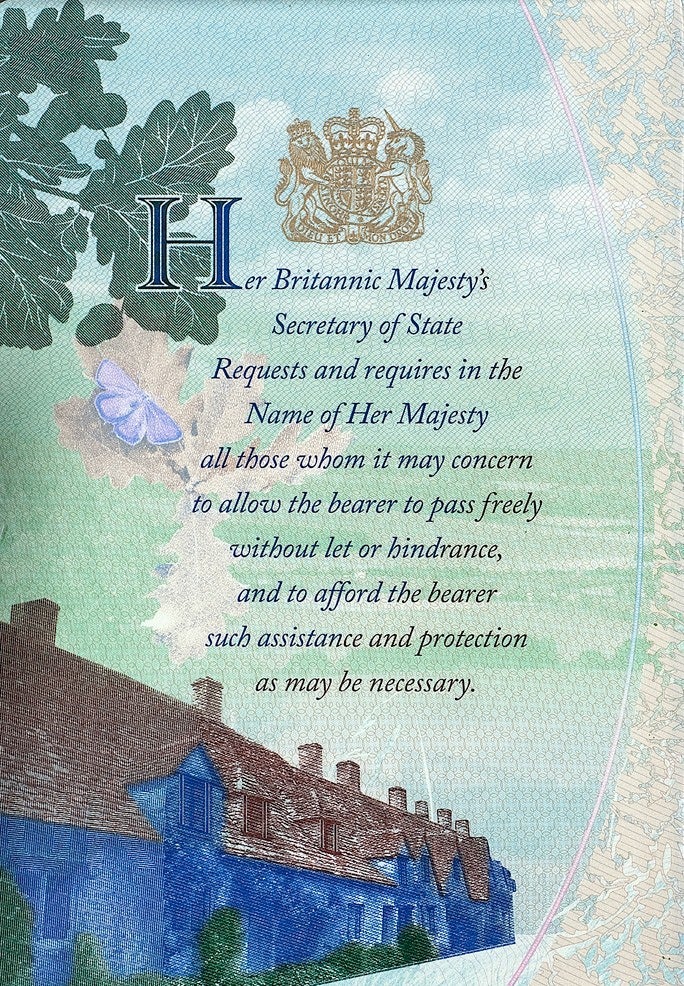An idyllic picture of scenic Britain, complete with its typical weather, was unveiled in the new UK passport today.
Sundials, narrow boats and windmills appear alongside clouds, lightning and a compass to enhance security in the "universally trusted document", the Identity and Passport Service said.
The makeover comes as part of a £400 million 10-year contract with De La Rue, which will start producing the new passports in October.
Each page includes a symbol depicting "typical British weather", but the outlook is predominantly cloudy with just four of the 28 pages forecasting the sun in a cloudless sky.
And while famous images - including the White Cliffs of Dover, the Gower Peninsula in Wales, Ben Nevis in Scotland and the Giant's Causeway in Northern Ireland - represent rural scenes from across the UK, images of urban Britain are nowhere to be seen.
Sarah Rapson, chief executive of the Identity and Passport Service, said: "What we're not trying to do is represent every single aspect of Britain today.
"We've deliberately chosen scenic Britain, the images you're seeing are representative of that aspect of Britain."
The 10-year adult passport, which will cost the same £77.50 as now, uses complex images to help prevent fraud.
Alongside the weather patterns, isobars and thermometers, the inside pages show intricate pictures of Blenheim Palace Gardens, a beach hut and the Dorset coast - all spread across two pages to increase security.
The holder's identity pages have been moved to the front of the book in a bid to reduce the time taken to pass through border controls and to bring the UK passport in line with others from Europe and the United States.
And there are now two photographs of the individual, with the main photo-page covered in a transparent film containing several layers of holograms.
Two birds, a tern and a fulmar, fly over a composite image of the White Cliffs of Dover merging into the outline of the UK on the same double-page spread.
Among the other most obvious changes, the electronic chip, which was introduced in 2006 to hold personal details, will be hidden inside the passport cover, making it harder to replace or alter without causing obvious damage to the document.
Some 25 million of the e-passports, issued since 2006, are currently in use, the Identity and Passport Service said.
Subscribe to Independent Premium to bookmark this article
Want to bookmark your favourite articles and stories to read or reference later? Start your Independent Premium subscription today.


Join our commenting forum
Join thought-provoking conversations, follow other Independent readers and see their replies